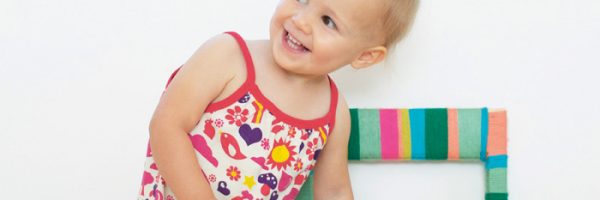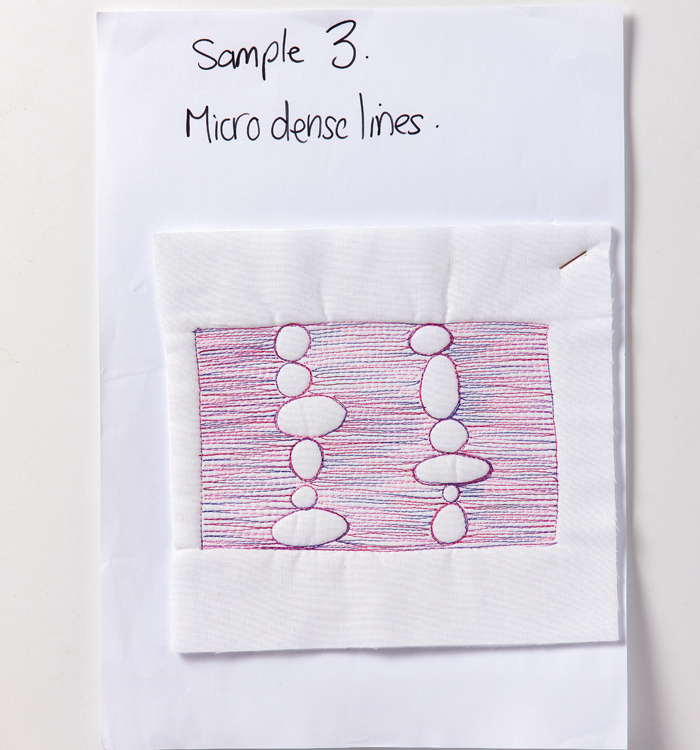
Quilting Advice from Deborah Louie: Free-Motion, Straight Line Quilting
Far too exhausting to to have straight lines running vertically and horizontally in the same pattern? Free-motion, straight line quilting is the answer. Written by Deborah Louie.
Straight Line Quilting Techniques
Sample 1
Start on a scrap of fabric and batting just to warm up. Start by moving the needle down, then up, and draw the bobbin fabric to the top. Hold onto both top and bobbin threads and stitch at a slow speed while slowly moving the fabric. You are aiming for tiny, close stitches to anchor the threads.
Then let go of the threads, frame your two hands softly around the darning foot, and at a medium speed on the machine, start moving the fabric. You want slow, smooth movements here: no jerky hands but slow, relaxed, rhythmic hands.
When you’re ready to work on your grid fabric, start at the top left corner (square #1). Push off the fabric with your fingertips. Slowly stitch to the first bottom line, then pull back up.
This is a push-pull movement that I teach in my machine-quilting classes very successfully; it allows you to feel in full control of your work. Continue up and down till you fill that 1in square. Then, when at the top, work the next square on the right (square #2), this time sideways movements left to right.
Remember slow, smooth hands and rhythmic, relaxed movements. Stop after every square to reframe the hands for the next square. Don’t take your hand off the fabric while the machine is going.
In squares #10, 12 and 13, I have worked the lines close together for some very dense quilting. Give this a go too.
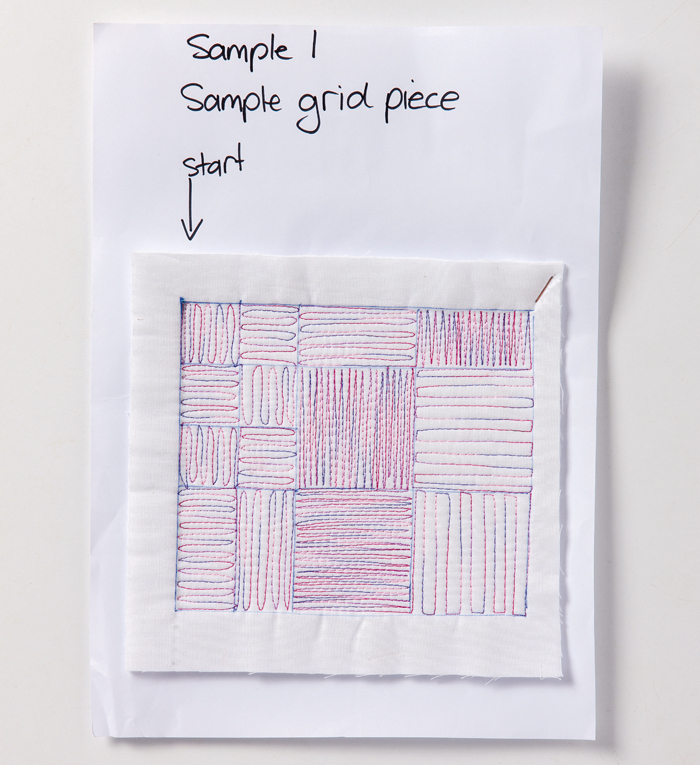
Sample 2
Sample #2 is what I call stick block quilting, which is ideal for borders. On a 6in-wide border, grid up 2in squares: my sample has three rows across and six rows down.
Starting at the top left square, stitch down, then across for two or three stitches, then go back up; come across again two or three stitches, then go down, as shown in sketch C. Continue in this manner all the way to the second square, finishing at the top. Work horizontal lines now all the way to the bottom. In the third square, work vertically again and so on.
This is a great fast, modern quilting design, perfect for borders or all over a modern quilt. Two-inch squares are easy to work with; if you make the squares too large, you might have some difficulty maintaining the straight lines. And when you’re deciding on the width of your borders, keep the quilting design repeat in mind.
This is a 2in design with three repeats across. If I made the border, say, 71/2in wide, the squares wouldn’t fit evenly across it — they’d look untidy and the quilting would be more difficult to accomplish. Try a coloured thread, like a variegated, to add an extra dash of colour or colour on colour for texture only.
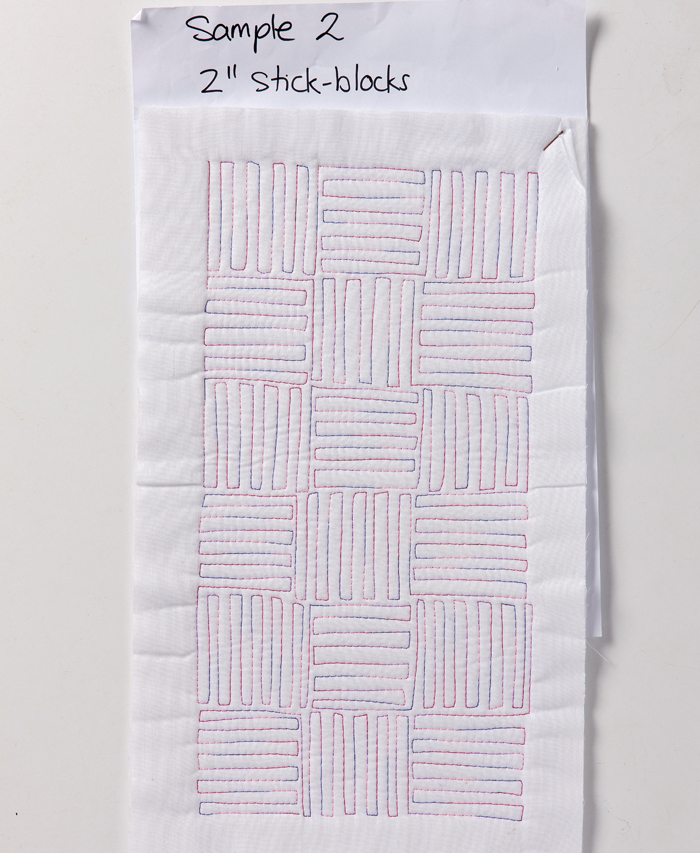
Create this cute Plenty of Fish in the Sea Kid’s Quilt with straight line quilting!
Sample 3
Horizontal micro, dense lines make an amazing background filler, as shown in sample 3. These very close lines result in dense, firm-to-the-feel quilting.
I quilted two rows of pebbles first, then micro, dense-line quilted background around the pebbles. This makes the pebbles pop and the eye is drawn to them.
Very dramatic! Mind you, the quilting draws in the work, sometimes reducing the size of the quilt quite considerably, so perhaps use this style of quilting in small areas only for an outstanding modern effect.

Sample 4
What about if we make the lines a little more random? In sample 4 I still have the grid there, with vertical and horizontal blocks the same as sample 2 but with a twist. I’ve simply changed the length of the lines: sometimes longer, sometimes shorter. The result is a more irregular, graphic design, which I call Random Sticks.
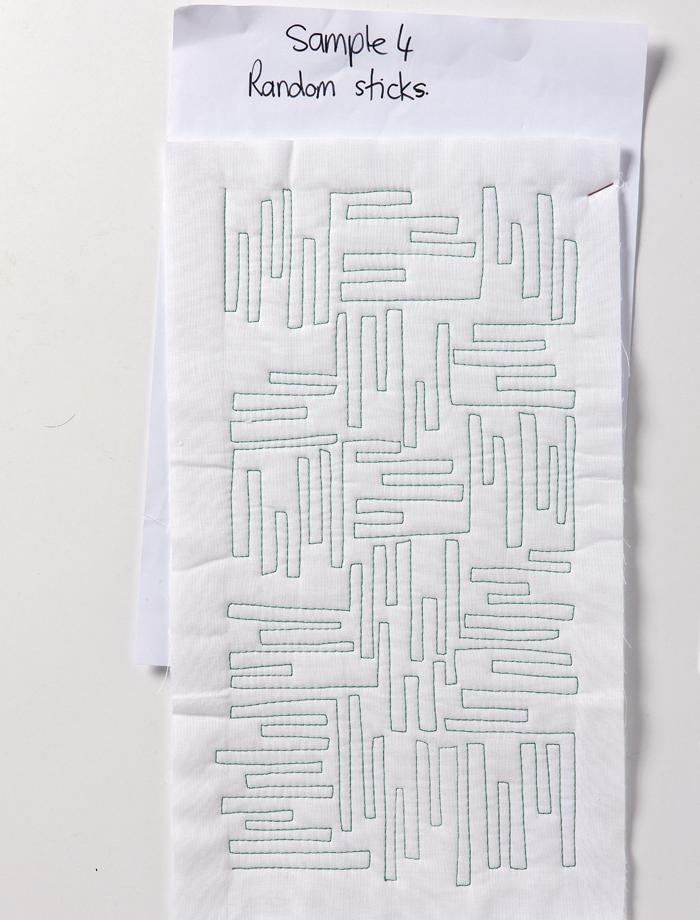
Try straight line quilting on the Essence of Spring Quilt!
Sample 5
Abstract geometric quilting is a lot of fun. Once you’ve tried the other patterns, try this one — I’m sure you’ll love it as much as I do. It is one of my favourites. Start at the top left side of your work; come down, then across, travelling to the right and crossing over, making small boxes of different sizes.
Work all the way to the right, then work down for about 3in, before starting to work across. Make sure that you cross over into the top row a few times to blend the rows together.
It is fun to quilt the pattern in different sizes: small-scale boxes, then larger. This is a very random pattern. I suggest you draw it on paper for a while to get the flow of the shapes before quilting it.
Just a warning here. If you pause too long at the corners of the squares while your needle is still going up and down stitching, you will get big knots at the front and the back of the quilt. We’re after sharp corners so you need the needle and hands to be a little faster with this design.
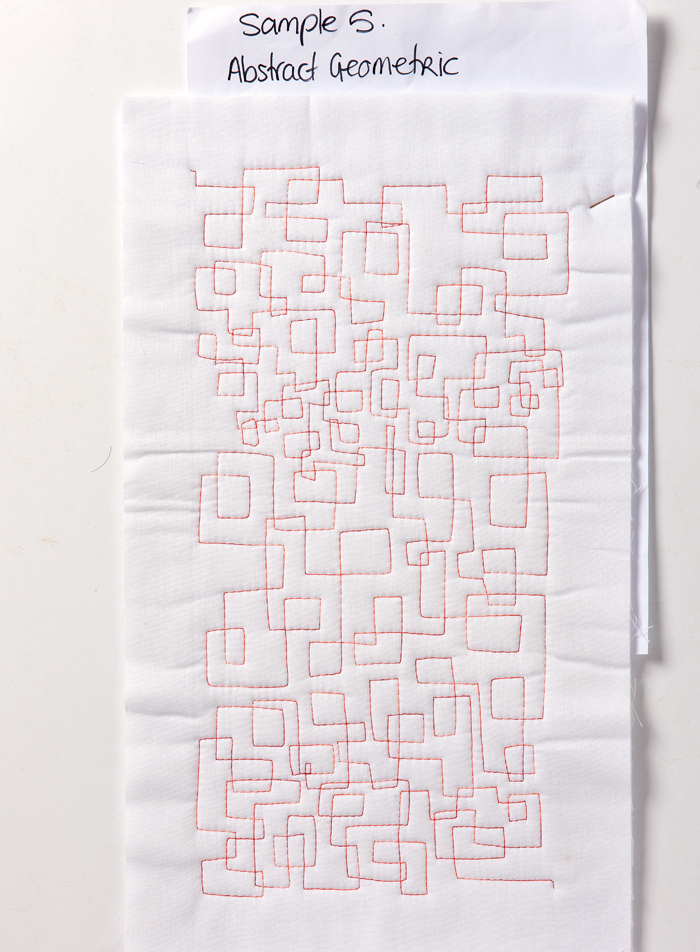
Sample 6
The last straight line quilting sample is Linked Boxes. This retro abstract pattern is stunning and great fun to quilt. It usually uses nine straight lines. I look at the pattern in terms of two boxes.
The first box is the outside numbers — 1, 2, 3 and 4 — then down for 5, across 6, up 7, and across 8. Number 9 is getting out of the box, into a free area where the next box should be.
Stop and frame for the next box, starting at 1 again and continuing to 9. Try changing the direction and the size of the boxes — in fact, try rectangles.
This is worked just like the other patterns: start at the top left and work across to the right, then work down one row of boxes and then work left again. This way you will never get stuck in an area. I call this the DQP: Deborah’s Quilting Plan!
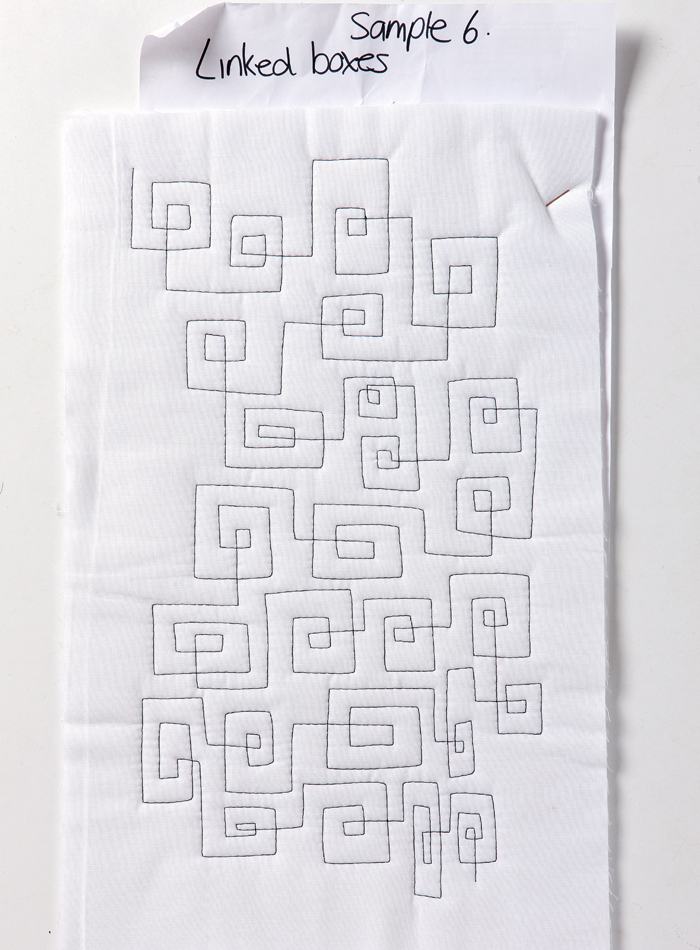
These patterns take a little practice at first, but in no time you will be terrific at straight line quilting patterns.


